Golden, crispy, and irresistibly salty, McDonald’s French fries are one of the most iconic fast food items in the world—but how much do you really know about them? Beneath that familiar crunch lies a surprising mix of science, history, and flavor engineering. From the real reason they taste so good to the unexpected ingredients hiding in each batch, these fries are anything but basic. Whether you’re a die-hard fan or a curious eater, these behind-the-scenes facts will change how you see (and eat) McDonald’s fries forever. Here are 12 eye-opening things you probably didn’t know—but definitely should.
1. Premium Potato Selection

McDonald’s doesn’t use just any potato for their world-famous fries. The fast-food giant specifically selects four premium varieties: Russet Burbank, Ranger Russet, Umatilla Russet, and Shepody potatoes.
These specific types were chosen for their ideal starch content and length, creating that perfect balance between crispy exterior and fluffy interior. Farmers growing these potatoes must meet strict quality standards before their crop makes it to your red cardboard container.
Each potato variety contributes slightly different characteristics to the final product, ensuring consistency across billions of servings worldwide.
2. High-Speed Water Knife Technology
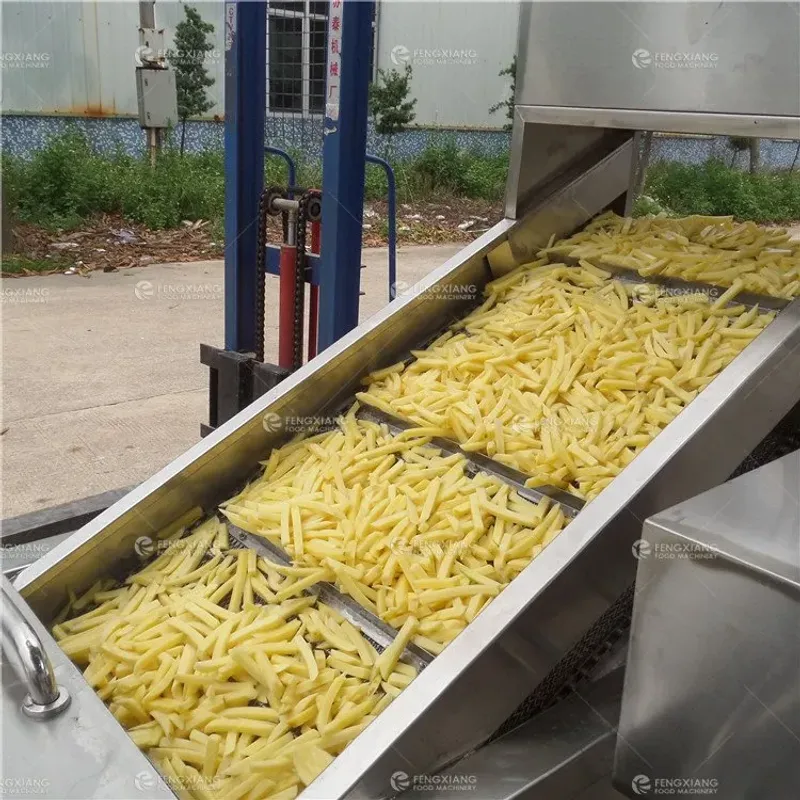
Forget traditional blades – McDonald’s employs water knife technology that transforms whole potatoes into perfect fries at mind-boggling speeds. These high-pressure water jets slice through potatoes at up to 117 feet per second!
Water knives ensure remarkably consistent cuts while minimizing damage to the potato cells. The precision cutting technology creates those signature long, rectangular shapes we’ve come to expect from McDonald’s.
This method also reduces waste and increases efficiency, allowing McDonald’s to process millions of pounds of potatoes daily across their global supply chain.
3. Flash-Freezing Preservation Method
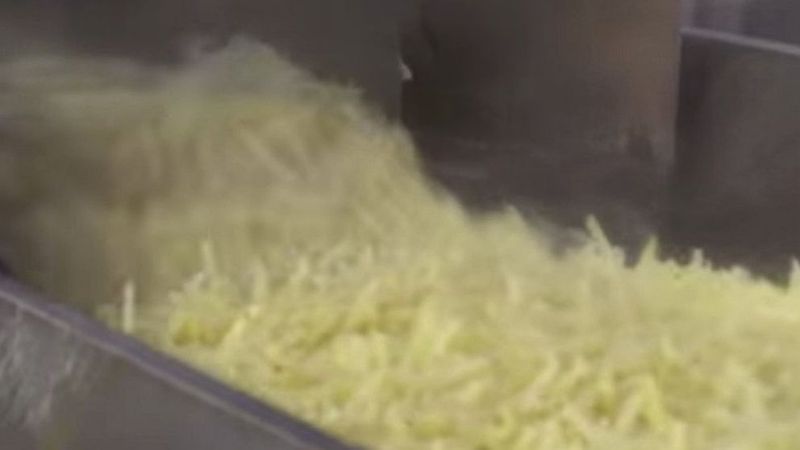
Ever wonder how McDonald’s maintains that consistent taste worldwide? After an initial partial frying, the fries undergo flash-freezing, a crucial step that locks in flavor and texture.
This rapid freezing process forms smaller ice crystals than conventional freezing, preserving the cellular structure of the potato. The result? Fries that maintain their quality during global shipping and storage for weeks.
When your local McDonald’s finally finishes cooking them, they deliver that signature taste and texture customers expect, whether you’re in Tokyo, Paris, or Chicago.
4. Surprising 19-Ingredient Recipe
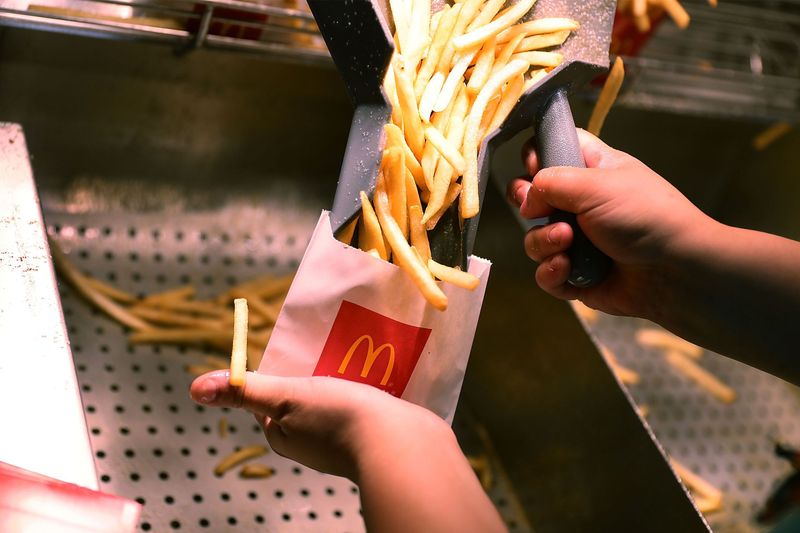
Despite their simple appearance, McDonald’s fries contain a surprising 19 ingredients. Beyond potatoes and oil, the recipe includes dextrose (a form of sugar) that gives fries their golden color and sodium acid pyrophosphate that prevents them from turning gray.
Various preservatives and processing aids ensure consistency across billions of servings. Hydrogenated soybean oil contributes to the crispy texture, while natural beef flavor provides that distinctive taste.
This complex formula represents decades of food science research aimed at creating the perfect French fry that keeps customers coming back for more.
5. Not Vegetarian-Friendly Despite Appearances
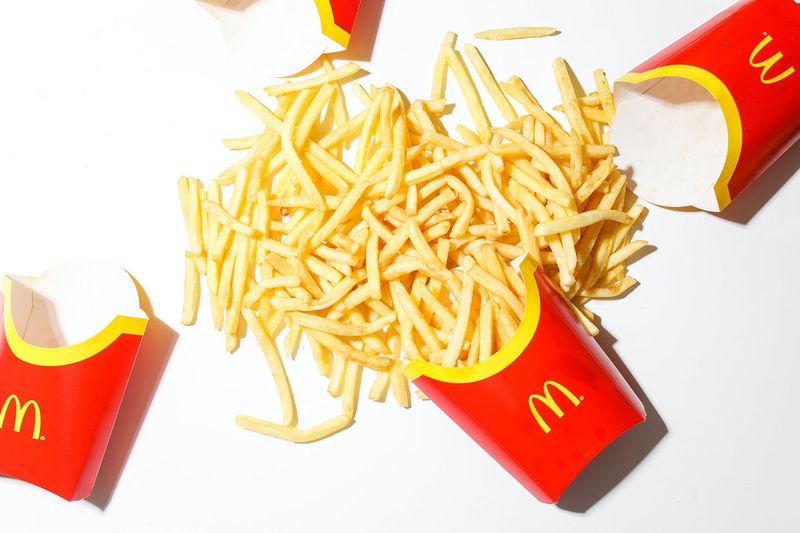
Those seemingly innocent potato sticks harbor a secret that surprises many vegetarians. McDonald’s fries contain natural beef flavor with milk derivatives, making them unsuitable for strict vegetarian or vegan diets.
The beef flavoring helps recreate the taste profile from McDonald’s original recipe that used beef tallow for frying. This ingredient varies by country – in India, for example, the fries are prepared differently to accommodate dietary restrictions.
The company has faced lawsuits over this issue, as many customers assumed potato fries would naturally be vegetarian-friendly.
6. Gluten-Free Fries

Good news for gluten-sensitive customers! McDonald’s fries are gluten-free, prepared in dedicated fryers using non-hydrogenated vegetable oil to prevent cross-contamination.
The company maintains strict protocols for handling their fries separately from gluten-containing products. This makes them a safe option for people with celiac disease or gluten sensitivity who might otherwise struggle to find fast-food options.
McDonald’s commitment to gluten-free preparation extends to regular equipment cleaning and employee training to maintain this important dietary accommodation.
7. The Addictive Beef Flavor Secret
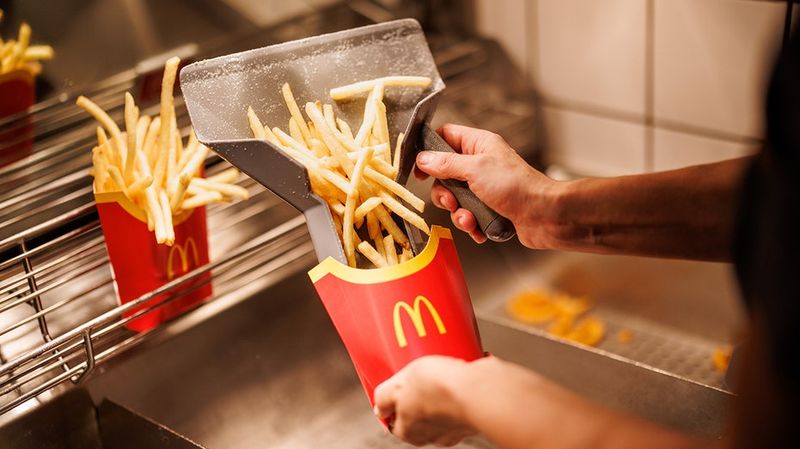
Remember when McDonald’s fries tasted even better? Until 1990, they were cooked in beef tallow, giving them an irresistible flavor that many still miss today.
When health concerns prompted a switch to vegetable oil, McDonald’s added a special beef flavoring to maintain that distinctive taste. This carefully formulated additive helps recreate the savory umami notes that made the original recipe so addictive.
Food scientists worked extensively to develop this flavoring that triggers the same pleasure centers in your brain as the original beef tallow version did.
8. Camera-Ready Appearance Engineering
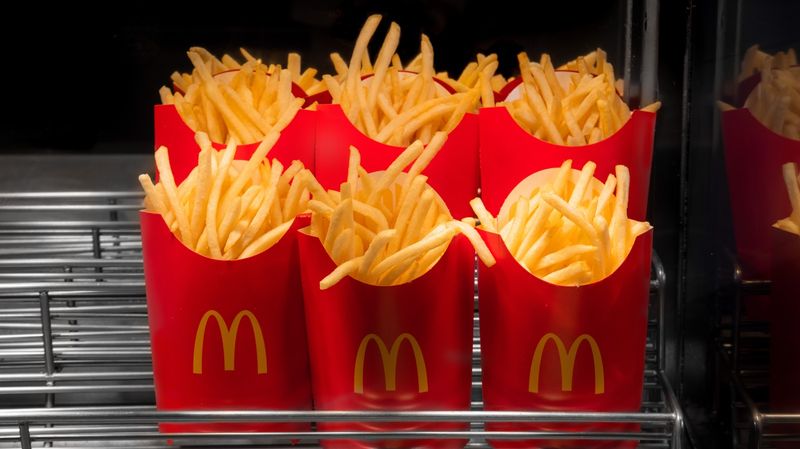
Those perfect golden fries in McDonald’s commercials aren’t just photoshopped – they’re engineered to look good in real life too! The dextrose (sugar) coating creates that perfectly golden exterior that’s so visually appealing.
Sodium acid pyrophosphate prevents oxidation that would otherwise turn fries grayish after cutting. This careful color preservation ensures that what you see in advertisements closely matches what you get in the restaurant.
Food stylists for McDonald’s commercials have an easier job because the product is specifically designed to maintain its appetizing appearance under bright lights.
9. Double-Frying Production Method
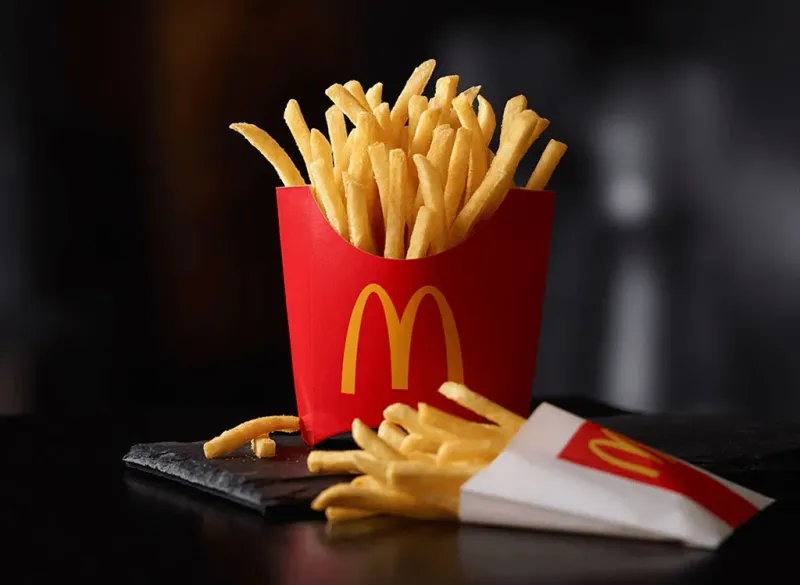
McDonald’s fries undergo a unique two-stage cooking process. First, they’re partially fried at production facilities before being frozen and shipped to restaurants worldwide.
This initial frying develops flavor compounds and begins forming that crispy exterior. When you order fries at McDonald’s, they undergo their second frying, which completes the cooking process in just a few minutes.
This double-frying method creates the perfect texture contrast between the crispy outside and fluffy inside while dramatically reducing preparation time at individual restaurants.
10. Specialized Oil Blend Formula
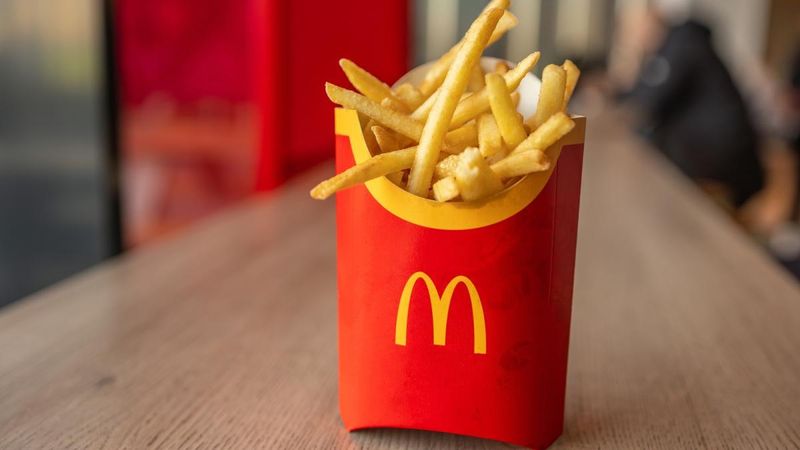
The perfect McDonald’s fry requires the perfect cooking medium. The company uses a proprietary blend of canola, soybean, and hydrogenated soybean oils that’s been fine-tuned over decades.
Each oil contributes specific properties: canola provides lightness, soybean adds stability, and the hydrogenated component helps achieve that signature crispiness. The exact ratios are closely guarded secrets within the company.
This specialized blend maintains a consistent flavor profile while achieving the ideal cooking temperature and heat retention necessary for that classic McDonald’s fry texture.
11. Staggering Global Consumption Figures

The scale of McDonald’s fry production is truly mind-boggling. The company sells approximately 9 million pounds of fries daily across its 38,000+ restaurants worldwide!
This makes McDonald’s the largest purchaser of potatoes in the food service industry, requiring vast dedicated farming operations. A single McDonald’s restaurant typically goes through several tons of fries each month.
The popularity transcends cultural boundaries – from America to Asia, McDonald’s fries remain consistently among the company’s top-selling items, often outperforming even their famous burgers in certain markets.
12. Recipe Evolution Through Decades
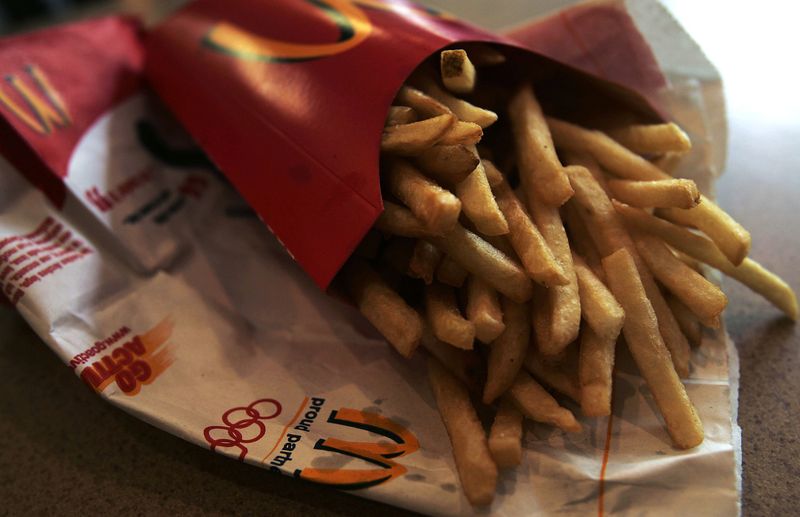
McDonald’s fries have undergone a fascinating evolution since their introduction. Originally fried in beef tallow, they delivered a rich, savory flavor that older generations still reminisce about.
In 1990, responding to health concerns about saturated fat, McDonald’s switched to vegetable oil with added beef flavoring. This controversial change altered the taste profile while attempting to maintain customer satisfaction.
Further refinements have occurred over the decades, balancing health considerations with flavor expectations, showing how even this seemingly simple product continues to adapt to changing consumer preferences.
Leave a comment